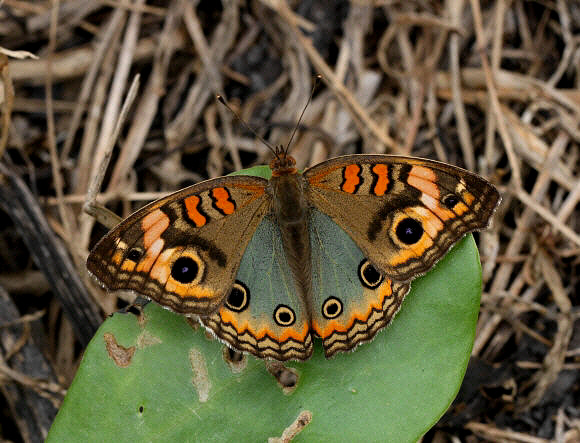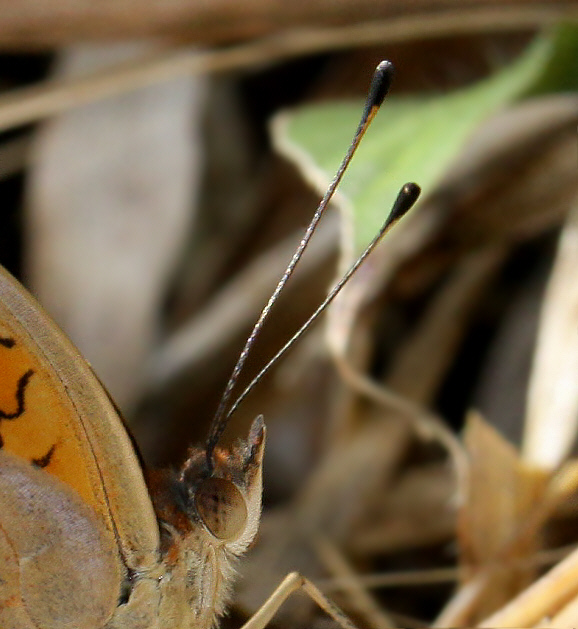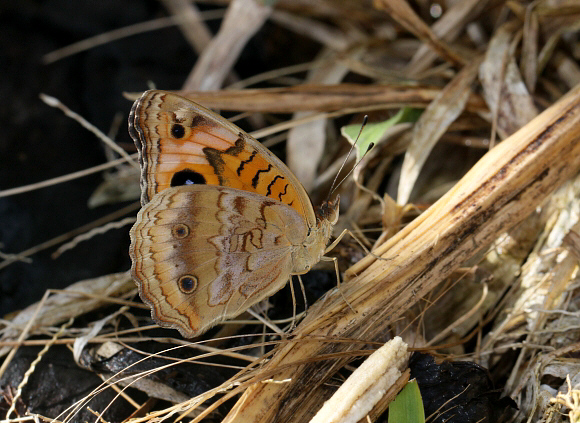
Introduction
The tribe Junoniini includes some of the most colourful and instantly recognisable butterflies in the world, including the African Precis Pansies and Salamis Mother of Pearl butterflies, and the Asian Kallima Dead Leaf butterflies. In the neotropics the Junoniini are represented by the genera Anartia, Siproeta, Hypolimnas, Metamorpha, Napeocles and Junonia. The latter genus is very closely allied to Precis, in fact the two are regarded as synonymous by some taxonomists.
There are 4 species of Junonia in the neotropics – coenia, evarete, genoveva and vestina, which are collectively known as the Buckeyes because of their prominent ocelli.
Junonia evarete and genoveva are very similar in appearance. As a general guide, the upperside of evarete is lighter, and the ocelli on the hindwings are roughly equal in diameter. On the underside the hindwings of genoveva are marbled, while those of evarete are quite plain.
Despite these differences the two taxa are commonly misidentified, and there are many mislabelled museum specimens and many errors in entomological books. Andrew Neild meticulously researched these taxa, comparing specimens from Surinam with the original paintings used by Cramer for his engravings and descriptions. He concluded that many of the characters used by other entomologists to separate them were unreliable for determining the distinctions between continental populations.
Neild states that the most reliable method of distinguishing between the 2 species is to examine the antennae – in genoveva the underside of the antennal club is black, and “obviously distinct from the rest of the antenna on the ventral surface”. In evarete the underside of the antenna, including the club, is uniform in colour, but varies from light to dark grey between individual insects.
Junonia genoveva is distributed from the southern USA to Bolivia and Brazil.

Habitats
Genoveva Buckeyes typically occur in small colonies of about 10-20 adults. They tend to be found in severely disturbed, dry sunny habitats such as in forest clearings, riverbanks and roadsides where there is a mixture of bare ground, grassland and scrubby vegetation. They have a wide altitudinal range, found from sea level to over 2000m. They tend to be more abundant in the dry season.
Lifecycle
The larval foodplants are in the family Verbenaceae.

Adult behaviour
Males are commonly observed basking on bare ground, rocks, or dry logs, with their wings fully or partly open depending on the ambient temperature. They are very alert at all times and instantly fly up if disturbed but usually return within a few seconds to their original position or somewhere close by. They ignore other species, but intercept either sex of their own species. Male territories usually overlap so there are regular encounters, but territorial battles tend to be quickly settled. When a passing female is intercepted, a short chase takes place prior to copulation, which typically occurs among herbage, close to bushes.
In late afternoon when temperatures begin to drop, both sexes gather at roosting sites. These tend to be sheltered areas in forest clearings or scrubland, where the butterflies roost in a slightly head-downward posture on flowerheads or on the stems or leaf-blades of coarse grasses.
